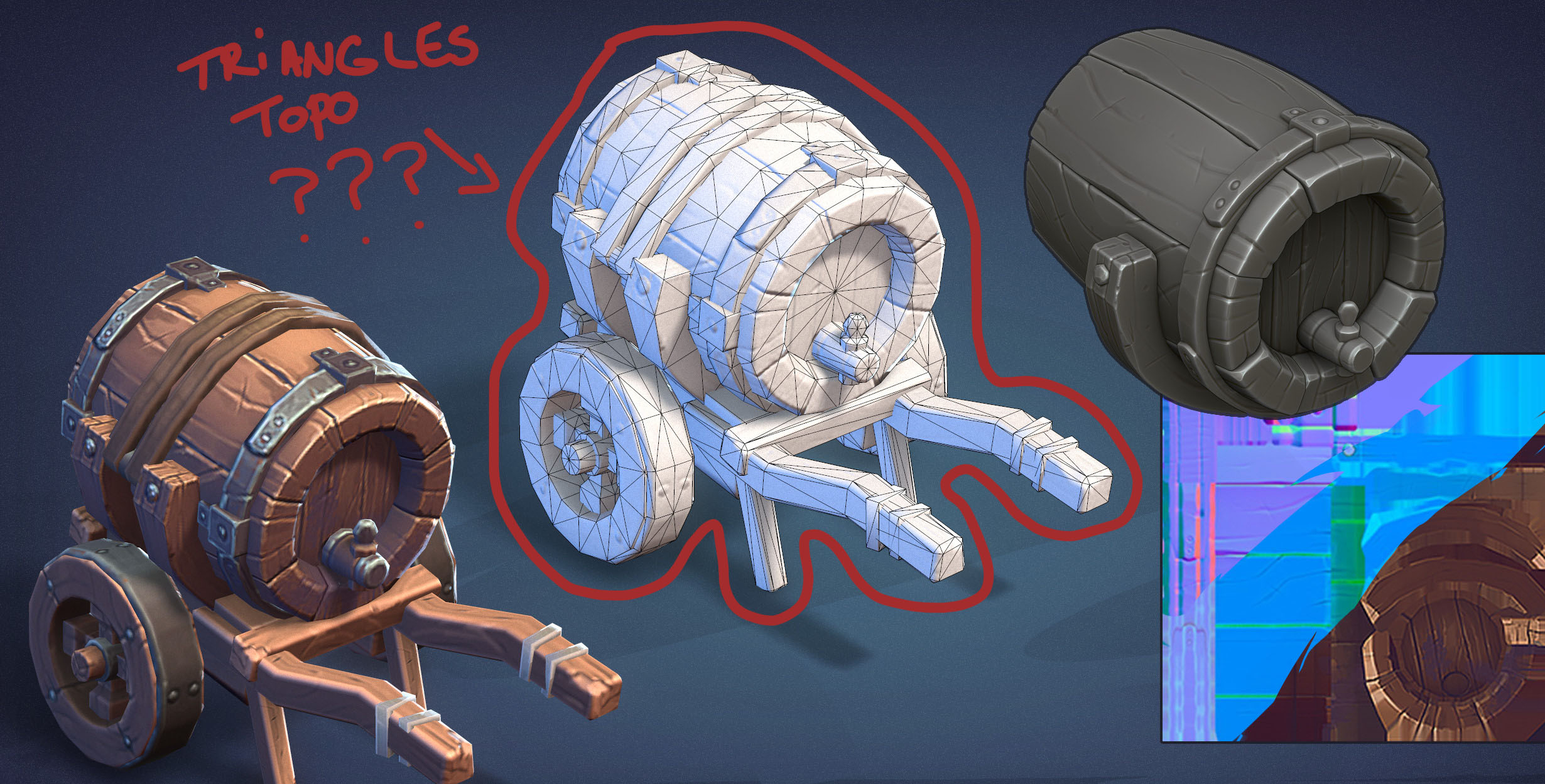The BRAWL² Tournament Challenge has been announced!
It starts May 12, and ends Oct 17. Let's see what you got!
https://polycount.com/discussion/237047/the-brawl²-tournament
It starts May 12, and ends Oct 17. Let's see what you got!
https://polycount.com/discussion/237047/the-brawl²-tournament
Topo/Retopo Props
Hi everyone!
I have a question or two about topology / retopo specifically for static props, game-ready assets.
I see and hear different versions about that. Some say retopo has to be done by hand,
and others say that only using decimate master (for example) in Zbrush can do the trick and no really clear answers in all of that.
I atached a picture (artwork not from me) so you can see a clearer example of what I'm talking about, and I see that everywhere.
This kind of wireframe I see it almost everywhere, so I prefer to ask the community to enlighten me,
if this kind of wireframe is "industry standard / game-ready asset"? And how do you get that kind of wireframe?
Thanks to whoever takes the time to explain clearly and wish you all a happy new year!



Replies
So in this specific instance, probably the artist either made a base mesh, which is probably very close to the wires you see and later also acts as a good portion of the low polys geometry, and then that is sculpted into the high poly. Or they sculpted the high poly and just manually retopod over that. (or a combination of both)
I don't really know what you mean about the wireframe, if you mean why is it triangulated? No real reason except that they might be getting the wireframe screenshot out of marmoset or substance, in which you basically have to triangulate when you export to them because things might and in many cases will get triangulated differently between packages and that would break baked TS normal maps.
Note that in the case of very simple props like this, it is very possible to start with this geo first, building it in such a way that it also is a good base for sculpting. Which makes the whole process a ton faster as it allows to test things ingame on day one (as a lowpoly asset like this would take about a mere hour to build), as opposed to having to wait for a sculpt, retopo and bake.